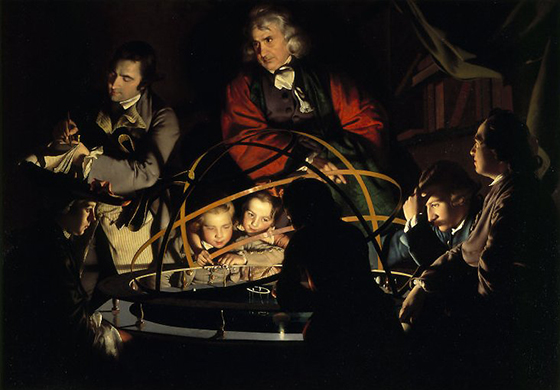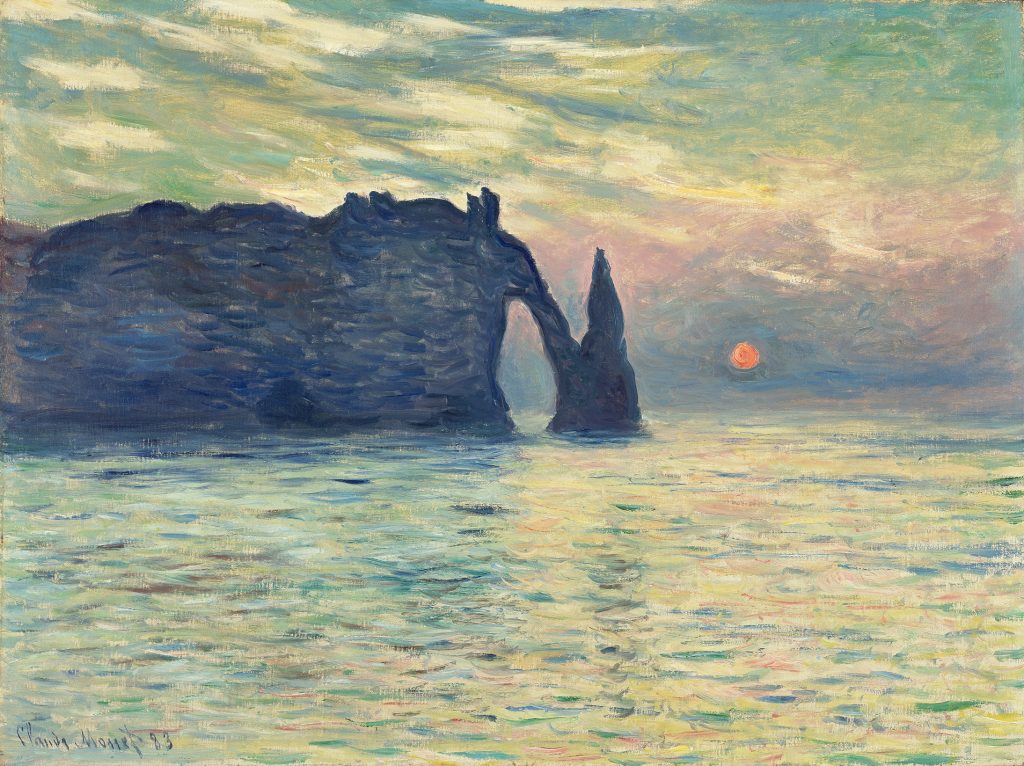Week 9: Space and Art
| Lascaux Shaft Scene from Lascaux, France. |
 |
| Joseph Wright of Derby's A Philosopher Giving a Lecture at the Orrery |
Sherlock - Figuring Out a Fake Painting
In fact, the only scientific evidence of the past was portrayed in illustrations. Even artists themselves may not even notice they’re doing it, but only simply interpreting and transferring the influence they see on the night sky. As a big fan of the British show Sherlock, one of my favorite scenes was when Sherlock spotted a fake Vermeer painting under 10 seconds based on an exploding star. The key concept of the scene was a “Van Buren supernova,” a fictitious supernova inspired by Dr. David Van Buren’s discovery of a starburst galaxy. In the show, the painting was created in the 1640s, but apparently only appeared in 1858. This got me thinking more about how art historians date paintings based on the subject matter. Scientists from Texas State University used “forensic astrology” to date many of Claude Monet’s paintings. They were able to find the exact date and time Monet painted the Étretat: Sunset based on the sky, but others have critiqued its ultra-precise dating as unable to be questioned. In other words, too good to be true.
 |
| Claude Monet's Étretat: Sunset |
Ultimately, space and art had made me more critical of images portrayed. When it comes to art, nothing is ever an accident. Every detail has a purpose, and by looking at the background like the sky, you’re able to determine a whole set of astrological discoveries. When artists of the past are unconsciously recording scientific evidence, an observant eye is important to notice such minute details. I’m influenced to look at things more closely and see the influence of art on science and science on art.
References
“The Cliff, Étretat, Sunset (Work of Art).” The Cliff, Étretat, Sunset – NCMALearn, learn.ncartmuseum.org/artwork/the-cliff-etretat-sunset/.
“Figuring out a Fake Painting in Just 10 Seconds - Sherlock.” YouTube, YouTube, 4 May 2018, www.youtube.com/watch?v=IwREUYN4UtQ.
“Newly Discovered Supernova May Help Explain Starburst Galaxies.” NASA, NASA, www.jpl.nasa.gov/news/newly-discovered-supernova-may-help-explain-starburst-galaxies.
Nguyen, Jennifer. “Archaeologists Figured out That Some of the World's Oldest Cave Drawings Don't Just Depict Animals - They're Constellations of Stars.” Business Insider, Business Insider, 20 Dec. 2018, www.businessinsider.com/ancient-cave-drawings-are-constellations-of-stars-2018-12.
“Nicolaus Copernicus (Article).” Khan Academy, Khan Academy, www.khanacademy.org/humanities/big-history-project/big-bang/how-did-big-bang-change/a/nicolaus-copernicus-bh#:~:text=Nicolaus%20Copernicus%20fulfilled%20the%20Renaissance,and%20understood%20Greek%20and%20Italian.
Vesna, Victoria, director. 8 Space Intro 1280x720. YouTube, YouTube, 29 July 2013, www.youtube.com/watch?v=2dPAmpBiVHY&ab_channel=UCOnline.
Vincent, Jame. “How Sherlock-Style Forensics Allowed Astrophysicists to Date This.” The Independent, Independent Digital News and Media, 27 Jan. 2014, www.independent.co.uk/life-style/gadgets-and-tech/how-sherlock-style-forensics-allowed-astrophysicists-date-monet-masterpiece-9087773.html.
“Wright of Derby, A Philosopher Lecturing on the Orrery (Article).” Khan Academy, Khan Academy, www.khanacademy.org/humanities/ap-art-history/later-europe-and-americas/enlightenment-revolution/a/wright-of-derby-a-philosopher-lecturing-on-the-orrery.
I really enjoyed reading your blog! I thought the Sherlock reference was really relevant and a good example of how space and art are intertwined!
ReplyDeleteHi Rose! I thought the part where you explained the relationship to current astrology and the art that was created at the time was very interesting. The shift in believing the sun to be the center of the universe to the earth was monumental, so it is fitting that art would reflect such a thing. You are very right that artists take lots of care into every detail they put into a piece, and these details reflect the current scientific thinking.
ReplyDelete